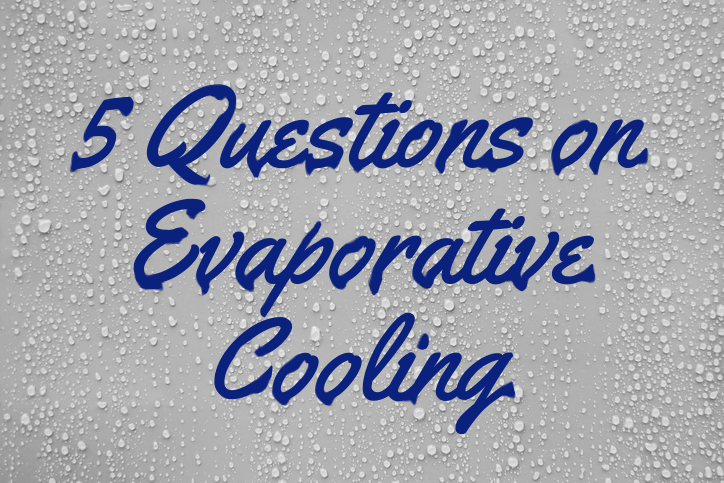Recent advances in technology have helped evaporative cooling become a hot choice for many builders and HVAC technicians. But, many people still have some basic questions about everything from how evaporative cooling works to if it really can deliver on all of the hype. Here are the answers to the five biggest questions on evaporative cooling.
1. How Does Evaporative Cooling Work?
Modern evaporative cooling uses cutting-edge, energy efficient technology to apply ancient air circulation principles to big and small structures. A minimal amount of moisture is circulated around a pad. Hot air is then passed through the pad, evaporating the water and cooling the air as it moves through.
The most effective units also incorporate a regular flow of fresh outside air into the cooling process. This keeps the cool air constantly moving inside the building and prevents pathogens from taking hold.
Evaporative cooling works similarly to how you would feel a chill when getting out of an outdoor pool, even on a warm day. The air around you is cooled as it evaporates the water off of your skin.
Commercial evaporative cooling just scales up this basic mechanism.
2. Is Evaporative Cooling Good for the Environment?
Unlike traditional air conditioners, evaporative coolers do not use any harmful or toxic chemicals such as CFCs or HFCs. They do not cause any ozone depletion.
Traditional air conditioners work by removing moisture from the air and do not make use of fresh outside air. This creates ideal conditions for pathogens to flourish in the air, ductwork, and the air conditioner unit itself. As a result, things such as allergens, bacteria, and mold may be passed throughout the building by an air conditioner. However, an evaporative cooler keeps fresh air moving into the building which makes it harder for any of these environmental toxins to take hold.
A large number of LEED certified buildings make use of evaporative cooling systems to achieve a lower carbon footprint.
3. Will Using Evaporative Cooling Save Money?
Evaporative cooling systems are cheaper to purchase and install than traditional air conditioning units. They are also significantly cheaper to operate. Depending on your location and tax situation, many evaporative cooling systems may qualify for energy efficiency tax credits. This allows businesses to immediately realize dramatic savings and it allows a faster return on investment.
When you factor in the health benefits that evaporative cooling systems have over refrigeration systems, the cost savings is even more significant.
4. What Advantages Does Evaporative Cooling Offer Over Traditional Air Conditioning?
Traditional air conditioners use a refrigeration model. They have been the industry standard for decades. However, these systems and the underlying technology have not aged well. Air conditioners require harmful chemicals to run properly, require a lot of energy, and can contribute to indoor environmental issues such as sick building syndrome.
The underlying principles of evaporative cooling systems have been around for hundreds of years. But, when these principles are paired with today’s efficient technologies, the result are modern evaporative cooling systems that are more effective, cheaper to operate, better for the environment, and healthier for buildings and the people living and working in them. Evaporative cooling systems are also more durable and easier to maintain than traditional refrigeration-based air conditioners.
5. How Does Modern Evaporative Cooling Technology Work?
Air2O for example uses a two stage indirect evaporative cooling solution. During the first stage, outdoor air is passed through the evaporative cooling section, and as the warm air is cooled, so is the water.
This cool water is then transferred to a high efficiency heat exchanger (over which the primary outdoor air is passed) to deliver the first stage of cooling with no additional moisture; this is indirect evaporative cooling. The air is then further cooled as it passes the second cooling stage; direct evaporative cooling. This same concept can also be utilized to provide ultra-efficient heat recovery of air-conditioned buildings.
The combination of these two stages delivers the highest performing evaporative cooling system available in the world today.


